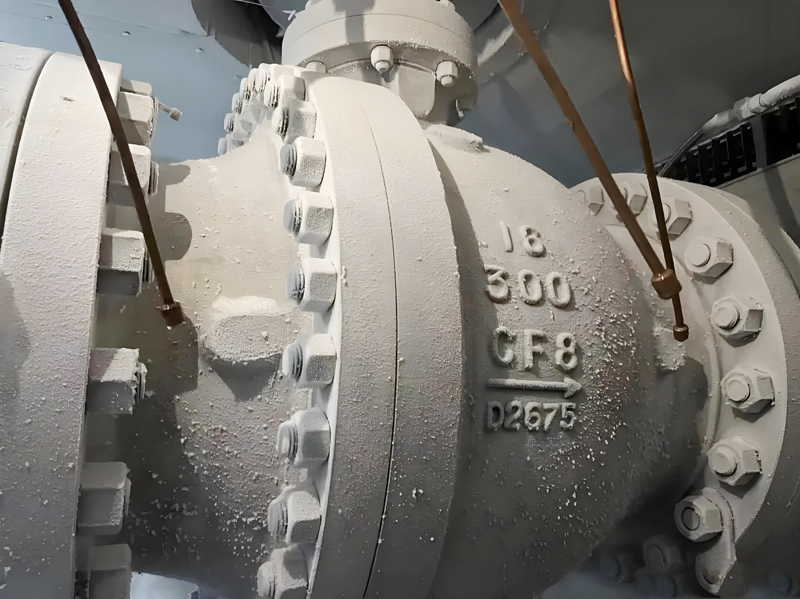Ball valves are among the most widely used valves in industrial and residential systems for their reliability, durability, and ease of operation. This article explores what a ball valve is, its critical components (body, ball, seat), classifications, pressure and size standards, and actuation methods. Whether you’re an engineer, procurement specialist, or DIY enthusiast, this guide will help you understand how to choose the right ball valve for your needs.

What is a Ball Valve
A ball valve is a quarter-turn valve that uses a hollow, perforated, and pivoting ball to control fluid flow. When the ball’s bore aligns with the pipeline, fluid flows freely; rotating the ball 90 degrees blocks the flow entirely. Its simple design ensures quick operation, minimal leakage, and compatibility with water, oil, gas, and corrosive media.
Key Components of a Ball Valve
1. Ball Valve Body
The ball valve body is the outer shell that houses internal components. It is typically made of robust materials like stainless steel, brass, or PVC, depending on the application. The body design determines the valve’s pressure rating and connection type (threaded, flanged, or wafer).
2. Ball Valve Ball
The ball valve ball is the rotating sphere with a bore (hole) through its center. It is often chrome-plated or coated with materials like PTFE to reduce friction and resist corrosion. The ball’s precision machining ensures tight sealing and smooth operation.
3. Ball Valve Seat
The ball valve seat is a ring-shaped component that forms a seal between the ball and the body. Seats are usually made of soft materials like PTFE or reinforced thermoplastics to ensure leak-proof performance, even under high pressure.
Types of Ball Valves Based on Connection Style
1. Threaded Ball Valve
A threaded ball valve features male or female threads at its ends, allowing direct screw-on installation into pipelines. Ideal for low-pressure residential systems (e.g., plumbing, HVAC), these valves are cost-effective and easy to install without welding.
Applications:
- Residential water supply
- Gas lines
- Small-scale industrial systems
2. Flanged Ball Valve
A flanged ball valve has flanged ends bolted to pipeline flanges. These valves handle high-pressure and large-diameter systems, offering easy maintenance and disassembly. Gaskets between flanges ensure a secure, leak-free connection.
Applications:
- Oil and gas pipelines
- Chemical processing plants
- Water treatment facilities
3. Wafer Ball Valve
A wafer ball valve (or *clamp-style ball valve*) is sandwiched between two pipeline flanges using bolts. Compact and lightweight, these valves suit space-constrained systems but lack end connections, relying on flange pressure for sealing.
Applications:
- Food and beverage processing
- Compact HVAC systems
- Low-pressure hydraulic systems
Ball Valve Classifications by Design
1. Floating Ball Valve
The ball is held in place by two seats and floats slightly under pressure. Suitable for small to medium-sized valves, this design is cost-effective but may struggle with high-pressure surges.
2. Trunnion Ball Valve
The ball is anchored by a trunnion (pivot) mechanism, reducing operational torque and handling higher pressures. Common in oil and gas pipelines.
3. Full Port vs. Reduced Port
- Full Port Ball Valve: The bore matches the pipeline diameter, minimizing flow resistance.
- Reduced Port Ball Valve: The bore is smaller, reducing valve size and cost but increasing pressure drop.
Ball Valve Pressure Ratings and Sizes
Pressure Ratings
Ball valves are rated based on their maximum allowable pressure (e.g., ANSI Class 150, 300, 600). Higher classes indicate greater pressure resistance. For example:
- Class 150: 285 PSI at 100°F
- Class 600: 1,440 PSI at 100°F
Factors Affecting Pressure Capacity:
- Material strength
- Seat and seal integrity
- Connection type (flanged valves handle higher pressures)
Size Standards
Ball valve sizes range from ¼ inch (for residential use) to over 48 inches (industrial pipelines). Common standards include:
- NPT (National Pipe Thread): For threaded valves.
- ASME B16.10: For face-to-face dimensions.
- ASME B16.5: For flanged valves.
Ball Valve Actuation Methods
1. Manual Actuation
Operated via a lever or handwheel. Best for small valves or systems requiring infrequent adjustments.
2. Pneumatic Actuation
Uses compressed air to automate valve operation. Ideal for remote or hazardous environments.
3. Electric Actuation
Powered by electric motors, enabling integration with control systems for precision flow management.
How to Choose the Right Ball Valve
1. Media Compatibility: Ensure materials (body, ball, seat) resist corrosion from the fluid.
2. Pressure and Temperature: Match the valve’s rating to system requirements.
3. Connection Type: Select threaded, flanged, or wafer based on pipeline design.
4. Port Size: Opt for full port valves for high-flow systems.
5. Actuation: Automate if frequent adjustments or remote control is needed.
Conclusion
Ball valves are versatile, durable, and essential for controlling fluid flow across industries. Understanding their components—ball valve body, ball, and seat—alongside types like threaded, flanged, and wafer ball valves, ensures optimal system performance. By considering pressure ratings, sizes, and actuation methods, you can select a valve that meets your operational demands. Always partner with a reputable manufacturer to guarantee quality and compliance with industry standards.
Post time: Mar-20-2025

